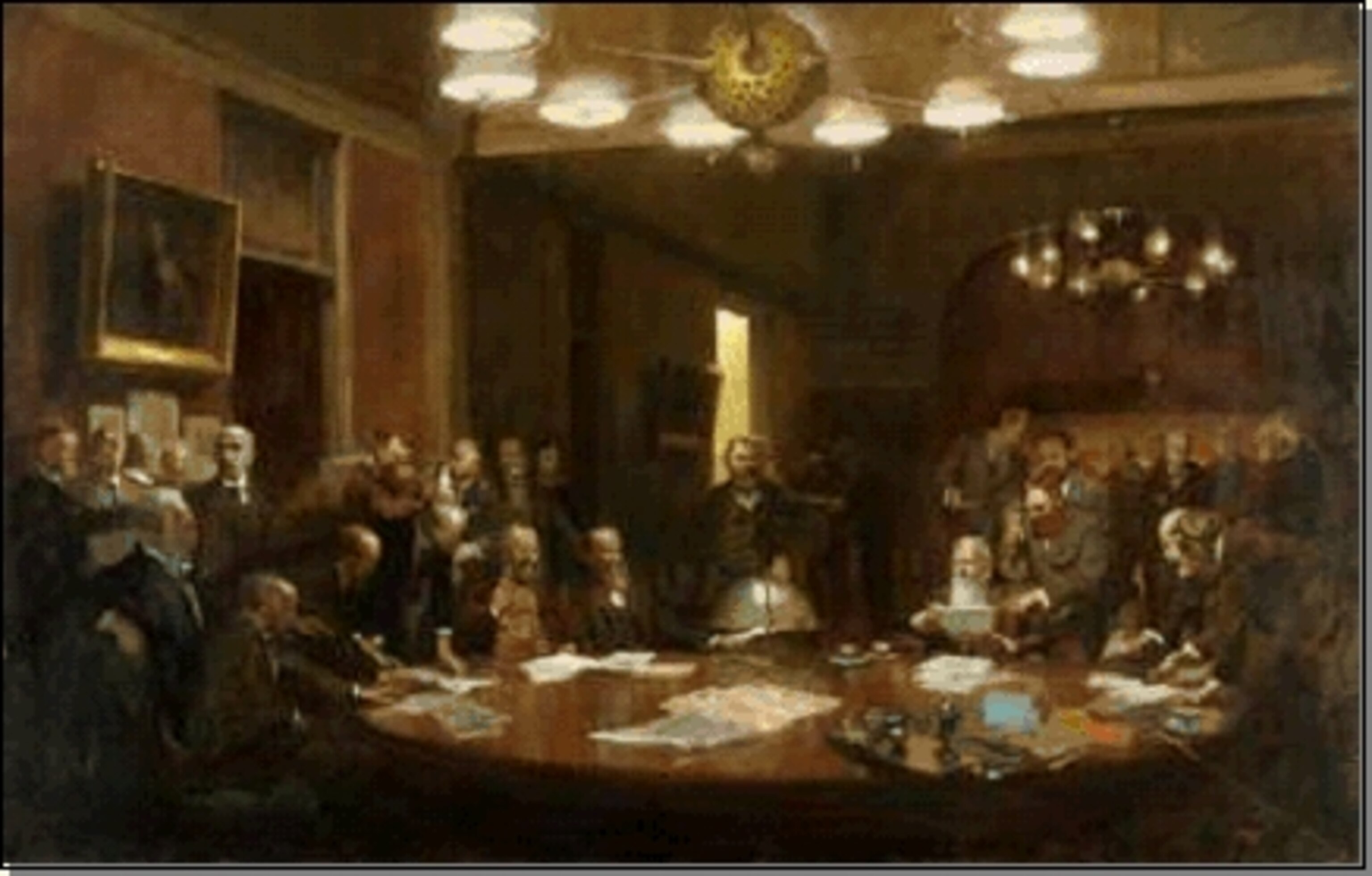Happy Birthday National Geographic!
In early January, 1888, a small invitation was received by a number of gentlemen prominent in Washington, D.C.’s scientific and intellectual circles. It read:

And so begins the story of the National Geographic Society, which celebrates its 122nd birthday today. Historian Mark Jenkins writes that at the time, the Cosmos Club was a hub for Washington’s scientific elite…
Thus on the appointed evening, Friday, January 13, the Assembly Hall duly fills with those gentlemen–33 in all–sufficiently intrigued by the proposition to make their way through fog and drizzle to attend. When they leave several hours later, animated by brandy and discussion, warmed by the fire, they have agreed that it is indeed “advisable and practicable” to organize a geographic society “on as broad and liberal a basis” as the dictates of dignity might permit. They have also agreed to return next Friday evening to discuss a draft constitution and plan of organization. Likely none of them notice, were it even possible, the stars in the night sky.
…[T]he following Friday night, January 20, nearly twice their number will meet in the Assembly Room and decide to incorporate themselves as a geographical body, an act accomplished one week later still, on the afternoon of Friday the 27th, when 15 of their number sign a Certificate of Incorporation formally affiliating themselves as the National Geographic Society. That evening the new organization–165 members strong–will officially assemble for the first time in the Cosmos Club to elect its first slate of officers.
and Adolphus W. Greely will embody the archetypes of the organization’s aspirations. Geographer Henry Gannett will be remembered as one of its most important early influences.
- National Geographic Expeditions
There will also develop a wide misperception that the founders as a group were gray and full of years, but their average age is around 42 and nearly half of them are in their 20’s and 30’s, working for the U.S. Geological Survey or the U.S. Coast and Geodetic Survey–practical men, in the prime of life. George Kennan, the explorer of Siberia and the Caucasus, is the lone representative of a profession, journalism, that most of his colleagues probably think will be only marginally relevant in the new organization’s future.
Today, if you visit our headquarters in Washington D.C., you will not only see the fruition of that original vision, but you can get a glimpse of what they would have seen on that first night, if not for the fog. The night sky as it appeared on January 13, 1888, is depicted on the ceiling of our M Street Building. Happy Birthday NG!
